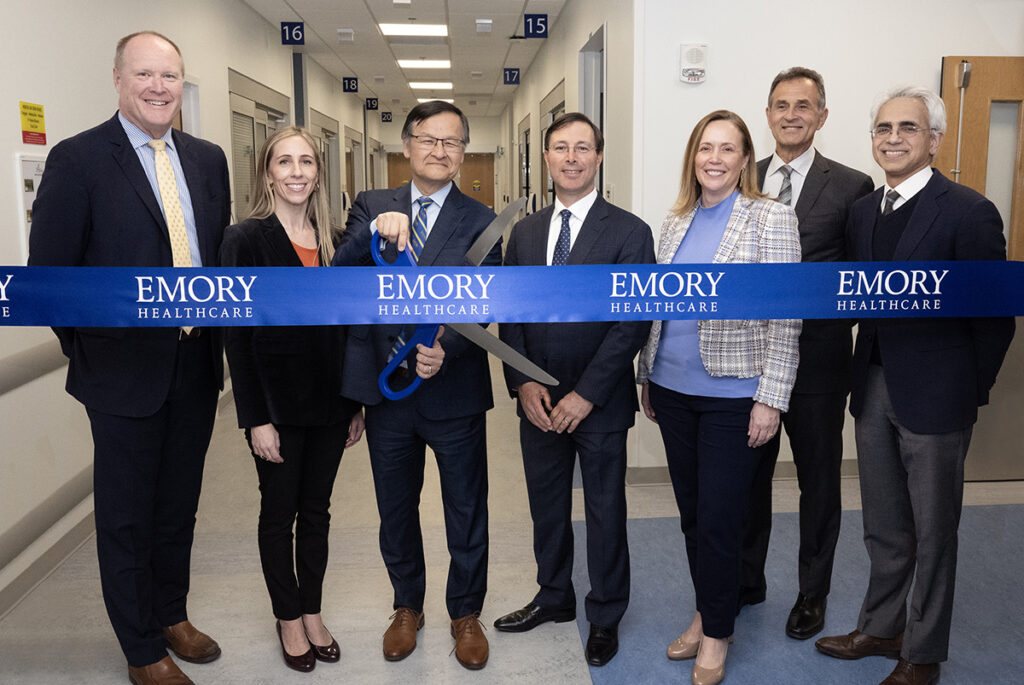Emory University Hospital’s new heart and vascular facilities began procedural services yesterday after opening on March 12. Emory Healthcare provided an $87.7 million investment to build the new facilities, which are located on the third and fourth floors of the hospital tower.
The idea to build the new facilities initially arose about seven years ago, according to Division of Cardiothoracic Surgery Chief Michael Halkos (99M, 06MR, 09MR, 12G).
Prior to this expansion, some Emory surgeons had been working in the same space for decades without any “major upgrades,” according to Halkos. Associate Professor of Medicine Divya Gupta (04M, 07MR, 11FM) added that some patients stayed in intensive care units (ICUs) that were about 50 years old, which impacted their health.
“The way our current surgical ICUs are, there are no windows that go to those rooms,” Gupta said. “Daylight, as much as we take it for granted, is a very important part of day-night differentiation, mental health and well-being.”

Dignitaries open Emory Heart & Vascular’s expansion on March 12. (Courtesy of Emory University)
Halkos stated that the demand for cardiac and thoracic surgery, which includes surgery on the heart, esophagus, lungs and trachea, has more than doubled since 2018. Previously, any patients the Emory University Hospital could not take due to capacity would have been placed on a waitlist for an appropriate facility or treated at a different hospital, according to Emory University Hospital Midtown Cardiology Service Chief Angel Leon (88FM).
“There’s been nowhere to put the people,” Halkos said. “There’s been nowhere to do the procedures.”
Halkos said that over a dozen physicians and hospital administrators pushed for funding, which was approved by Emory’s Board of Trustees and the Emory Healthcare Board of Directors. The project was slowed by several obstacles, including the COVID-19 pandemic, increases in labor costs and supply chain issues, according to Halkos.
The new third-floor area now contains new operating rooms, catheterization laboratories and electrophysiology laboratories.
The physical unification of the new area is one of its greatest strengths, according to Leon. Previously, patients requiring multidisciplinary assistance had to be moved within the hospital because the relevant infrastructure was elsewhere, Halkos said.
“In this type of business, you may not have hours,” Halkos said. “You may have minutes to intervene.”
Additionally, the hospital’s efficiency is improved because the sections can share infrastructure and use the hospital’s staff in a “flexible way,” according to Leon. Halkos explained that the new facilities have enhanced imaging technology, while the new machines minimize radiation exposure to patients.
When the fourth-floor area opened in January, beds filled rapidly in the new 16-bed cardiovascular ICU, which has operating rooms for cardiovascular and thoracic surgery as well as laboratories, according to Leon.
“There was a need and the need was met,” Leon said. “If we had opened it and half the beds were empty … you would scratch your head and say, ‘Boy, did we really need this?’”
Gupta highlighted that increased space allows for the patient’s family to be more involved in their care.
“With this facility, we are able to provide that sort of care in that the patient comes first,” Gupta said. “There is enough space now for the patient and the patient’s family, to be quite honest, to be a part of their care.”





